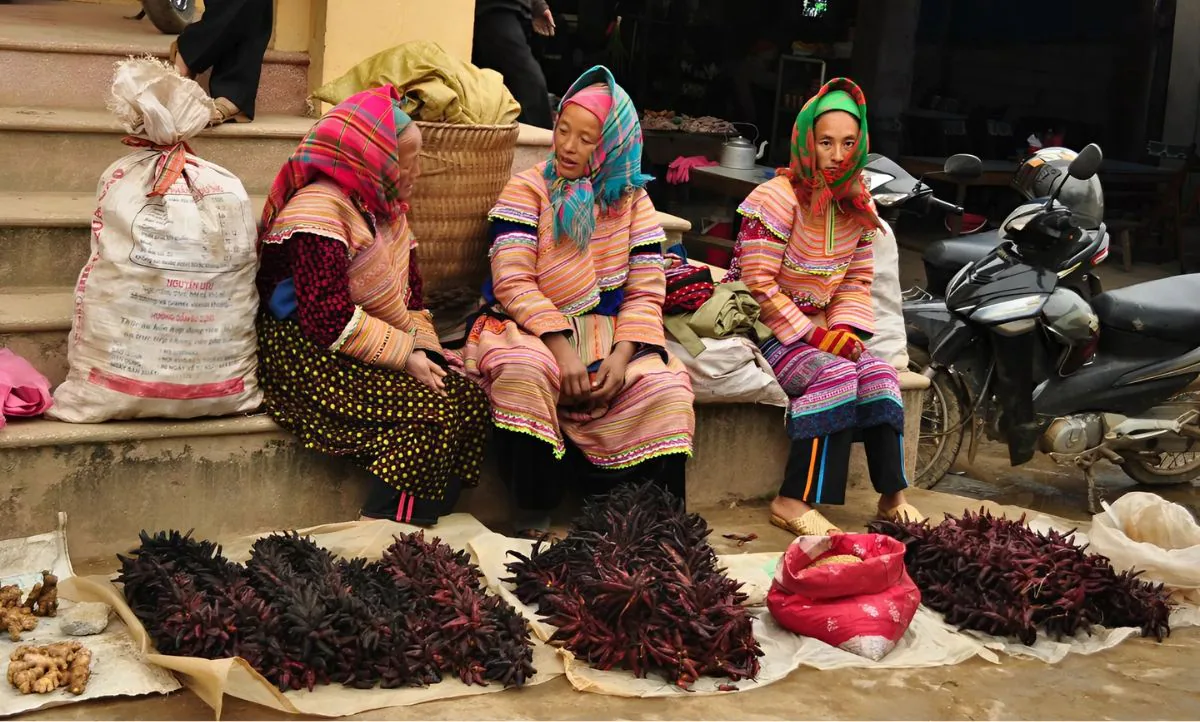
Nestled among the majestic mountains of Lao Cai, Bac Ha is a destination brimming with natural beauty and vibrant culture. Part of Vietnam’s captivating Northwest region, Bac Ha offers visitors a rich tapestry of colorful landscapes, ethnic traditions, and unforgettable experiences.
Where is Bac Ha?
Bac Ha lies about 71 km northeast of Lao Cai City. Thanks to improved infrastructure, getting there is much easier than before. From Hanoi, travelers can follow Nhat Tan Bridge, continue on the Noi Bai – Lao Cai Expressway, and connect to Highway 4E and Provincial Road 153 to reach Bac Ha.
The region is home to diverse ethnic groups like the Tay, Hmong, Dao, and Nung. Each community contributes unique customs, vibrant costumes, and distinctive cuisines that make Bac Ha a fascinating cultural destination.
Best Time to Visit Bac Ha
The ideal time to visit Bac Ha is from March to June, when the weather is pleasant and nature bursts into bloom. This period coincides with plum blossoms and a spectacular array of flowers, creating breathtaking scenery perfect for exploring and photography.
Top Things to See and Do in Bac Ha
Bac Ha Flower Valley
Located in Thai Giang Pho commune, the Bac Ha Flower Valley covers around one hectare and features over 200 types of flowers. Strolling through this valley feels like stepping into a vivid painting, surrounded by tulips, hydrangeas, lavender, evening primrose, cymbidium orchids, roses, and more. The serene atmosphere here offers a peaceful escape from the noise of urban life.
Getting there from Bac Ha town takes just a few minutes by car along Provincial Road 159 and Pac Kha Street, followed by a short drive into the valley.
Hoang A Tuong Palace
A striking architectural highlight, Hoang A Tuong Palace—sometimes called the “castle of the highlands”—was built over a century ago for Hoang Yen Chao and his son Hoang A Tuong, who were influential local Hmong leaders. The palace blends Asian and European design, with a U-shaped layout and intricate details. Recognized as a national relic in 1999, it remains an impressive symbol of Bac Ha’s history and culture.
Hoang Thu Pho Waterfall
Nature lovers shouldn’t miss Hoang Thu Pho Waterfall, a stunning cascade pouring down rocky slopes. From a distance, the waterfall resembles a white silk ribbon draped across the lush mountainsides, adding to the dramatic beauty of Bac Ha’s landscapes.
Bac Ha Market (Cho Phien)
One of Bac Ha’s cultural highlights is the Bac Ha Market, held every Saturday and Sunday morning. Locals from various ethnic groups gather in colorful traditional attire to trade goods, produce, livestock, and handicrafts. It’s a vibrant scene filled with lively chatter and the enticing aromas of local cuisine—a perfect place to soak up the region’s authentic culture.
Useful Tips for Visiting Bac Ha
- Pack light and choose easy-to-carry luggage, as Bac Ha’s terrain is mountainous and uneven.
- Wear comfortable clothing—light layers in summer, warm clothes in winter—and sturdy shoes suitable for walking.
- Bring essentials like sunscreen, hats, rain gear, and basic personal medications for small injuries or travel discomforts.
- Respect the environment: avoid littering and do not pick flowers or damage plants.
- Accommodation in Bac Ha is mainly homestays, offering a range of prices and services. Book in advance, especially during weekends, as rooms fill up quickly.
- Local food is delicious and reasonably priced, with meals averaging around 150,000 VND (about $6 USD) per person.
- Consider combining your Bac Ha trip with nearby attractions such as Y Ty, the Lao Cai International Border Gate, Sapa, Bao Ha Temple, or Fansipan—the highest peak in Indochina.
Why Visit Bac Ha?
From vibrant flower valleys to historic architecture and bustling highland markets, Bac Ha is a destination where natural beauty and cultural richness come together. Whether you’re exploring scenic landscapes, discovering local traditions, or simply enjoying the peaceful mountain air, Bac Ha promises a journey full of wonder and unforgettable memories.



